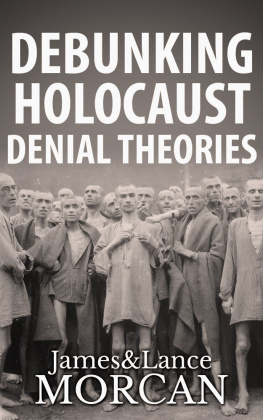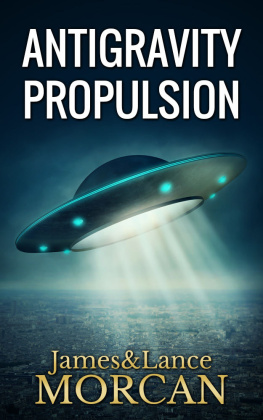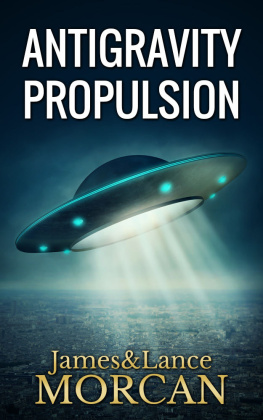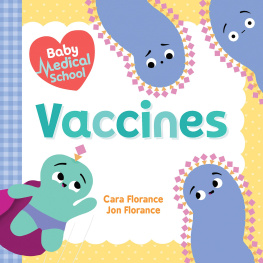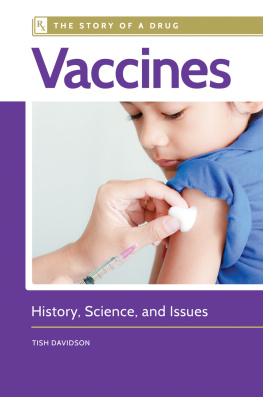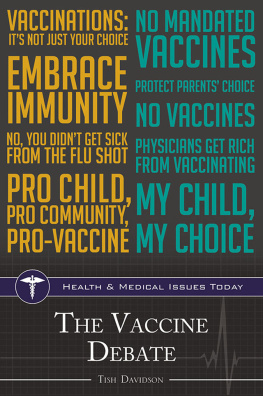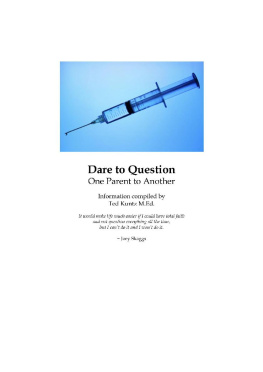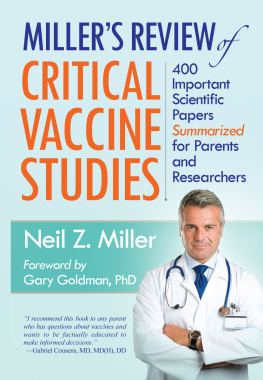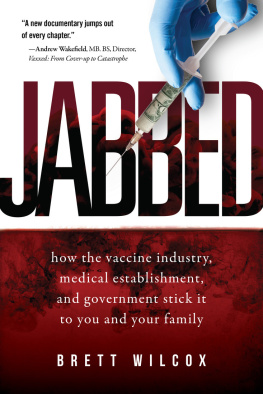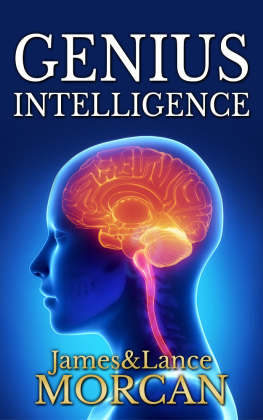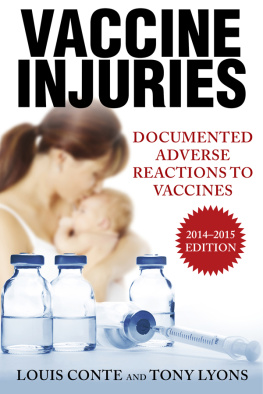VACCINE SCIENCE REVISITED:Are Childhood Immunizations As Safe As Claimed?
THE UNDERGROUND KNOWLEDGE SERIES
James & Lance
MORCAN
VACCINE SCIENCE REVISITED: Are Childhood Immunizations As Safe As Claimed?
Published by:
Sterling Gate Books
28 St. Heliers Place,
Papamoa 3118,
Bay of Plenty,
New Zealand
sterlinggatebooks@gmail.com
Copyright James Morcan & Lance Morcan 2019
All rights reserved. No part of this book may be reproduced or transmitted in any form or by any means, electronic or mechanical, including photocopying, recording or by any information storage and retrieval system, without written permission from the publisher, except for the inclusion of brief quotations in a review.
Although the authors and publisher have made every effort to ensure that the information in this book was correct at press time, the authors and publisher do not assume and hereby disclaim any liability to any party for any loss, damage, or disruption caused by errors or omissions, whether such errors or omissions result from negligence, accident, or any other cause.
Should you the reader identify any content within this book that is harmful, hurtful, sensitive or insensitive, the authors and publisher ask that you contact them so they may rectify any problem.
Medical disclaimer: The information contained herein reflects only the opinion of the authors. It is not to be construed as medical care or medical advice and is not a replacement for medical care given by physicians or trained medical personnel. Specific medical advice should be obtained from a licensed health care practitioner.
National Library of New Zealand publication data:
Morcan, James 1978
Morcan, Lance 1948
Title: VACCINE SCIENCE REVISITED: Are Childhood Immunizations As Safe As Claimed?
Edition: First ed.
Format: Ebook
Publisher: Sterling Gate Books
ISBN: 978-0-473-46775-3
CONTENTSI think of the need for more wisdom in the world, to deal with the knowledge that we have. At one time we had wisdom, but little knowledge. Now we have a great deal of knowledge, but do we have enough wisdom to deal with that knowledge? Jonas Salk
Acknowledgements
Elsabet (Lisa) Norris, Medical Laboratory Scientist: For carefully reading this manuscript at various stages over the years and seeing potential in our early, raw drafts. For patiently advising us on how to improve it again and again. And also for sharing insider tales of what goes on in medical labs and public healthcare facilities. We cannot thank you enough, Lisa!
Dr. Stephen Martino, M.D.: For sharing details about the field of neurology and also offering personal insights as a father who oversaw and observed vaccination of his own children.
Denis Toovey, Clinical Pharmacist and author of Better Health for You : For collaborating with us on our previous medical non-fiction book, which helped prepare us to put together the pieces of this healthcare jigsaw.
Dr. Kevin Coleman: For alerting us to anomalies in vaccine research and answering numerous scientific questions over the years. Also for sharing personal experiences of administering vaccines on various continents during his professional medical career.
Sigrur . Einarsdttir, Registered Nurse: For reading the manuscript and giving honest feedback.
Leticia Martinez: For encouragement and being a positive force.
Tammi Stefano: For setting an example of how to be courageous and stand up for the truth.
Lastly, wed like to thank the more than 10,000 members of Underground Knowledge , the global discussion group we founded on Goodreads. Especially the doctors, scientists, nurses and parents who bravely shared their opinions about vaccines in a public forum.
Foreword
B ack when I was a student in the laboratory science program at Weber State University, Utah, I developed a fascination for microbial life. Vaccine science was a part of the curriculum, but the emphasis, ahead of all else, was on the greatness of the invention of vaccines and their revolutionary ability to ward off sickness. Vaccines were then, and still are, considered a lifesaving technology. Said to be so crucial to our health that every child should receive the official immunization schedule, which in some countries is now mandatory by law.
During my student days, there was never any opportunity for discussion relating to potential downsides to the vaccination process and we were even encouraged, albeit subtly, to debunk anyone who dared question the safety of the many vaccines in circulation.
What we didnt learn as students, and something you dont commonly hear about when being vaccinated, is what a vaccines ingredients or contaminants are (not to mention their potential side effects).
The microbial, or bacteriological, realm inside us always continued to intrigue me. Even after completing my formal studies at university and commencing work as a medical laboratory scientist, I conducted personal research into this unique world in my downtime. It wasnt until more recent years however, that I came across research papers and articles on vaccines that led me to develop some reservations in regards to their manufacture. This was literally the first time, after many years of studying medicine and working in the healthcare sector, that vaccines became a concern to me.
Having two teenage kids who are both fully vaccinated, healthy and without allergies or disabilities of any kind, I cant say my concern over vaccines and their side effects related to me personally. Yet having worked at a medical clinic for many years it was not lost on me how often children were falling ill and being diagnosed with some type of disease. As I started to research further, I began to wonder whether there could be a valid correlation between vaccines and at least some of these diagnosed childhood diseases.
Trying to find such a correlation turned out to be more difficult than expected. Vaccine research is often convoluted or else too narrowly focused. I also came to realize how difficult it is to distinguish between legitimate research and biased research. It became clear to me that many of the research papers I was studying were misrepresenting true observations.
I have great respect for researchers and the passion they put into their work. The papers they publish are often ground-breaking and fascinating. Unfortunately though, science has its own version of fake news .
This was highlighted in shocking fashion in October of 2018 when the worlds news media reported that three academics Dr. Peter Boghossian, Helen Pluckrose and Dr. James Lindsay had cleverly exposed the weaknesses of scientific journals. In order to prove a point about shoddy research standards, they made up research and created their own data to fit a pre-conceived conclusion and sent these papers off to peer-reviewed journals. Some of these papers made it through peer review and were actually published.
That and other examples of serious flaws in the field of scientific research have forced me to view other scientists work with a more critical eye.
In the first part of this book, authors James and Lance Morcan put vaccine ingredients under the microscope one at a time and explain their effects on cells within the human body. This is a journey like no other. The reader is given an insight into how the vaccine ingredients themselves impact our cells and what happens to us when our cells are exposed to them.
The second part of this book inspects the various illnesses associated with the ingredients found in childhood vaccines. At times the dangers seem so obvious you start wondering why it isnt clear to everyone.
Vaccine Science Revisited opens your eyes to so much more than just vaccines. It makes the reader realize how affected we are by our environment in general. And all of a sudden, all the various disorders humankind puts up with start making more sense. We are shown how multitudes of factors play their part and how these make it so difficult for medical professionals to determine a specific cause for an illness. Because most likely, there isnt a specific cause, but an accumulation of multiple causes.
Next page

